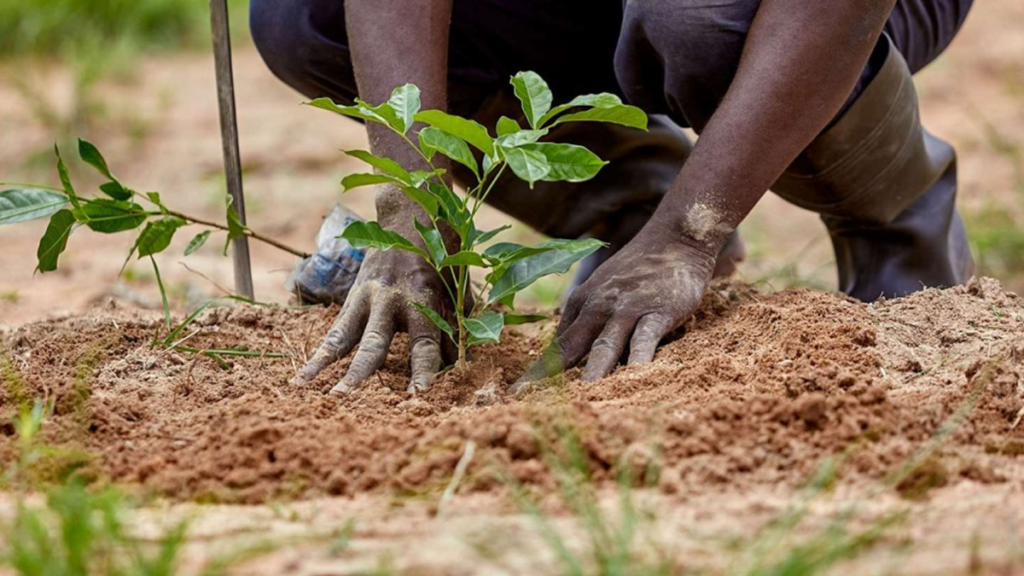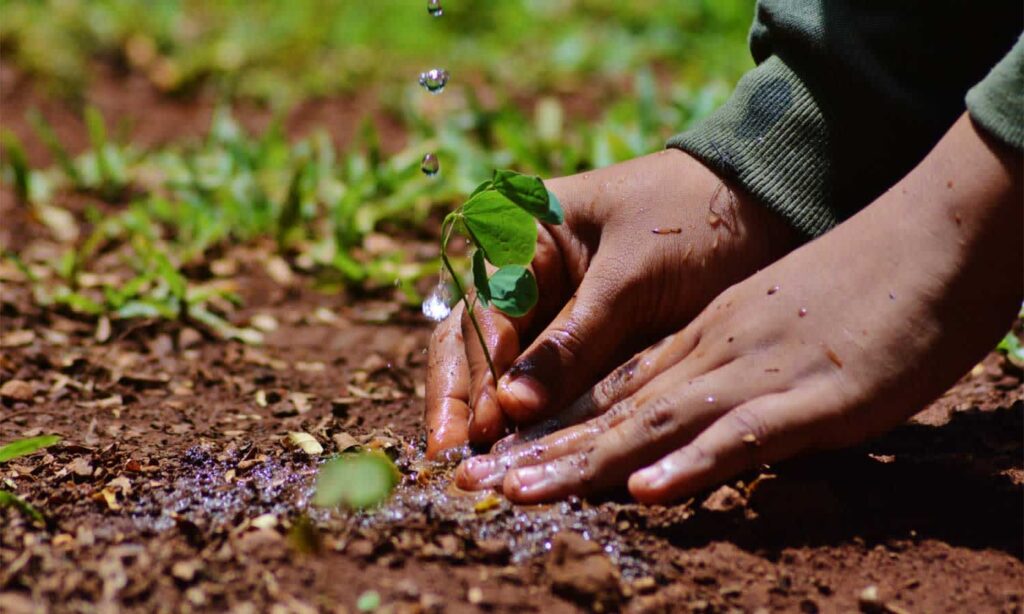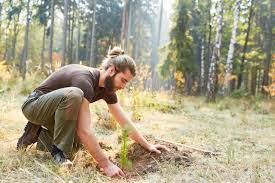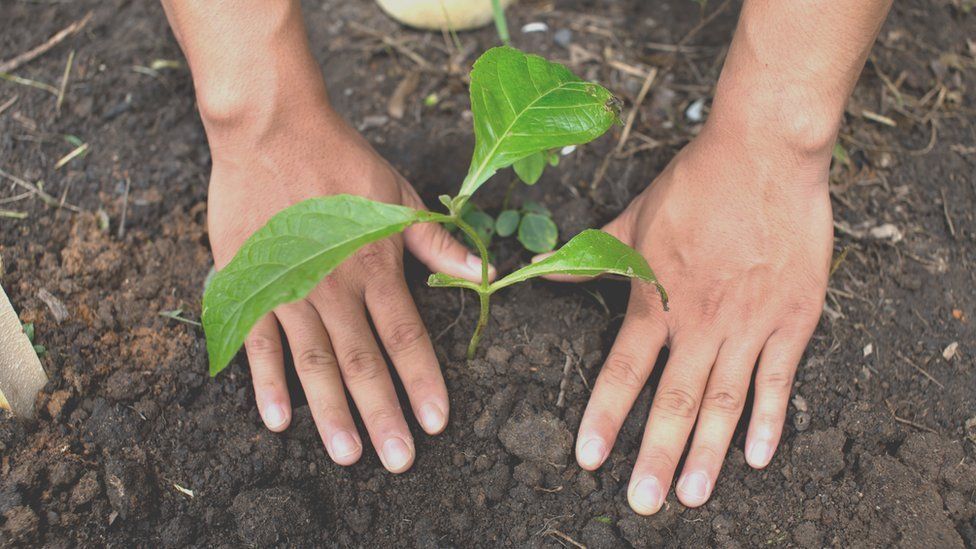The climate crisis is a global emergency, but every individual can be part of the solution. Planting trees is a simple yet profound action that empowers us to combat climate change, restore ecosystems, and create a healthier planet for future generations. This comprehensive guide explores the science behind tree planting, its multifaceted benefits, and practical ways you can contribute to this vital endeavor.
Section 1: Trees as Nature’s Carbon Capture Technology
Trees are nature’s most efficient carbon capture and storage systems. Through the remarkable process of photosynthesis, they absorb carbon dioxide (CO2) from the atmosphere, convert it into oxygen and biomass, and store the carbon in their wood, leaves, and roots. This natural process not only cleans the air we breathe but also plays a crucial role in mitigating the greenhouse effect, a leading cause of global warming.
- The Carbon Cycle and Climate Change: The carbon cycle is the natural process by which carbon moves between the atmosphere, oceans, land, and living organisms. Human activities, primarily the burning of fossil fuels, have disrupted this cycle by releasing massive amounts of CO2 into the atmosphere, trapping heat and causing the planet to warm. Trees act as a natural counterbalance by absorbing and storing excess carbon.
- The Science of Carbon Sequestration: Photosynthesis is the engine that drives carbon sequestration in trees. During this process, trees use sunlight, water, and CO2 to produce sugars for energy and growth. The carbon from the CO2 is incorporated into the tree’s tissues, effectively removing it from the atmosphere.
- Lifetime Carbon Storage: The amount of carbon a tree can sequester depends on its species, age, size, and growing conditions. A single mature tree can absorb up to 48 pounds of CO2 per year. Over its lifetime, it can sequester one ton of carbon or more.
- Forests as Carbon Reservoirs: Forests are vast carbon reservoirs, storing enormous amounts of carbon in trees, soil, and other organic matter. Protecting and expanding forests is essential for maintaining a stable climate and reducing the concentration of CO2 in the atmosphere.
Beyond Carbon: The Multifaceted Benefits of Trees
While their role in carbon sequestration is paramount, trees offer a wide range of additional benefits that extend far beyond climate change mitigation:
- Air Quality: Trees act as natural air filters, removing pollutants like particulate matter, nitrogen dioxide, and sulfur dioxide from the air. This improves air quality, reduces respiratory problems, and enhances overall public health.
- Water Management: Trees play a vital role in regulating water cycles. Their roots help to prevent soil erosion, filter runoff, and replenish groundwater. They also transpire water vapor into the atmosphere, contributing to cloud formation and precipitation.
- Biodiversity: Trees provide habitats for a vast array of species, from insects and birds to mammals and fungi. They create complex ecosystems that support biodiversity and ecological balance.
- Temperature Regulation: Trees create shade, cooling urban environments and reducing the need for air conditioning. This not only saves energy but also mitigates the urban heat island effect, where cities experience higher temperatures than surrounding areas.
- Mental and Physical Health: Numerous studies have shown that spending time in nature and around trees reduces stress, improves mood, enhances creativity, and boosts overall well-being. Trees provide a natural antidote to the stresses of modern life.
- Economic Value: Trees contribute to local economies through tourism, recreation, and the production of sustainable products like wood, fruits, nuts, and medicinal plants. They also enhance property values and create jobs in forestry, landscaping, and other related industries.
How Tree Planting Fights Climate Change
Tree planting is a multifaceted strategy for combating climate change:
- Reducing Greenhouse Gas Emissions: By absorbing CO2, trees directly counteract the emissions from human activities like burning fossil fuels, deforestation, and industrial processes.
- Enhancing Carbon Sinks: Planting trees expands the Earth’s capacity to store carbon, helping to offset emissions and slow down the rate of global warming.
- Protecting Existing Forests: Preventing deforestation is crucial, as it releases stored carbon back into the atmosphere. Protecting forests also safeguards biodiversity, water resources, and the livelihoods of communities that depend on them.
- Restoring Ecosystems: Planting trees in degraded areas can help restore ecosystems and their vital functions, such as soil fertility, water regulation, and biodiversity.
Getting Involved: How You Can Make a Difference
Everyone can contribute to the global effort of tree planting:
- Plant a Tree: Whether in your backyard, a community garden, or through a reforestation project, planting a tree is a direct and tangible way to make a difference. Choose native species that are well-suited to your local climate and soil conditions.
- Support Organizations: Numerous organizations focus on tree planting and forest conservation. Donate, volunteer, or spread awareness about their work. Your support can help fund reforestation projects, protect endangered forests, and empower local communities.




Choosing the Right Trees for Your Climate
The success of tree planting initiatives hinges on selecting tree species that are well-suited to the specific climate, soil conditions, and ecological context of the planting site. Careful consideration of these factors ensures that the trees thrive, maximize their benefits, and contribute to long-term environmental health.
- Native vs. Non-Native Species: Native tree species are those that have evolved naturally in a particular region and are adapted to its specific climate, soil, and ecological interactions. They offer numerous advantages over non-native species, including:
- Enhanced Biodiversity: Native trees provide food and shelter for a wide range of native wildlife, supporting local biodiversity and ecological balance.
- Greater Resilience: Native trees are better adapted to local pests, diseases, and climate fluctuations, making them more resilient to environmental stressors.
- Lower Maintenance: Native trees often require less water, fertilizer, and pest control than non-native species, reducing maintenance costs and environmental impact.
- Growth Rate and Carbon Sequestration: Fast-growing tree species can sequester carbon more quickly in their early years, making them valuable for rapid climate change mitigation. However, slow-growing species often have longer lifespans and may ultimately sequester more carbon over their lifetime.
- Drought Tolerance and Climate Resilience: In regions prone to drought or extreme weather events, choosing tree species with high drought tolerance is crucial. These trees are better equipped to withstand dry conditions and contribute to long-term ecosystem resilience.
- Soil Type and Drainage: Different tree species thrive in different soil types. Consider the soil texture, pH, and drainage of your planting site when selecting trees. Planting trees in unsuitable soils can lead to poor growth, increased susceptibility to diseases, and even tree mortality.
- Tree Size and Spacing: Consider the mature size of the tree species you choose and space them accordingly. Overcrowding can lead to competition for resources and hinder tree growth.
Tree Care and Maintenance
Planting a tree is just the first step. Proper care and maintenance are essential for ensuring its long-term health and maximizing its benefits:
- Watering: Young trees require regular watering, especially during dry periods. As trees mature, they become more drought-tolerant, but supplemental watering may still be necessary during prolonged droughts.
- Mulching: Applying a layer of mulch around the base of the tree helps to retain moisture, suppress weeds, regulate soil temperature, and add organic matter to the soil.
- Pruning: Regular pruning helps to maintain tree shape, remove dead or diseased branches, and promote healthy growth.
- Pest and Disease Control: Monitor trees for signs of pests or diseases and take appropriate action if necessary. Early detection and treatment can prevent serious damage and even save the tree’s life.
Community Engagement and Collaboration
Tree planting is not just an individual effort; it’s a collective endeavor that requires community engagement and collaboration. By working together, we can amplify our impact and create lasting change:
- Community Tree Planting Events: Organize or participate in community tree planting events. These events bring people together, raise awareness about the importance of trees, and create a sense of shared purpose.
- School and Youth Programs: Engage schools and youth organizations in tree planting initiatives. Educating young people about the importance of trees and empowering them to take action is an investment in the future.
- Partnerships with Local Organizations: Collaborate with local environmental organizations, community groups, and businesses to expand the reach and impact of tree planting projects.
- Advocacy and Policy Change: Advocate for policies that support tree planting, protect forests, and incentivize sustainable land management practices.
Planting trees is a powerful tool for combating climate change, restoring ecosystems, and creating a healthier, more sustainable future for all. By understanding the science behind tree planting, choosing the right trees for your climate, and engaging in collective action, we can all contribute to this vital endeavor. Let’s plant trees, nurture them, and watch them grow into symbols of hope, resilience, and a brighter future for generations to come.